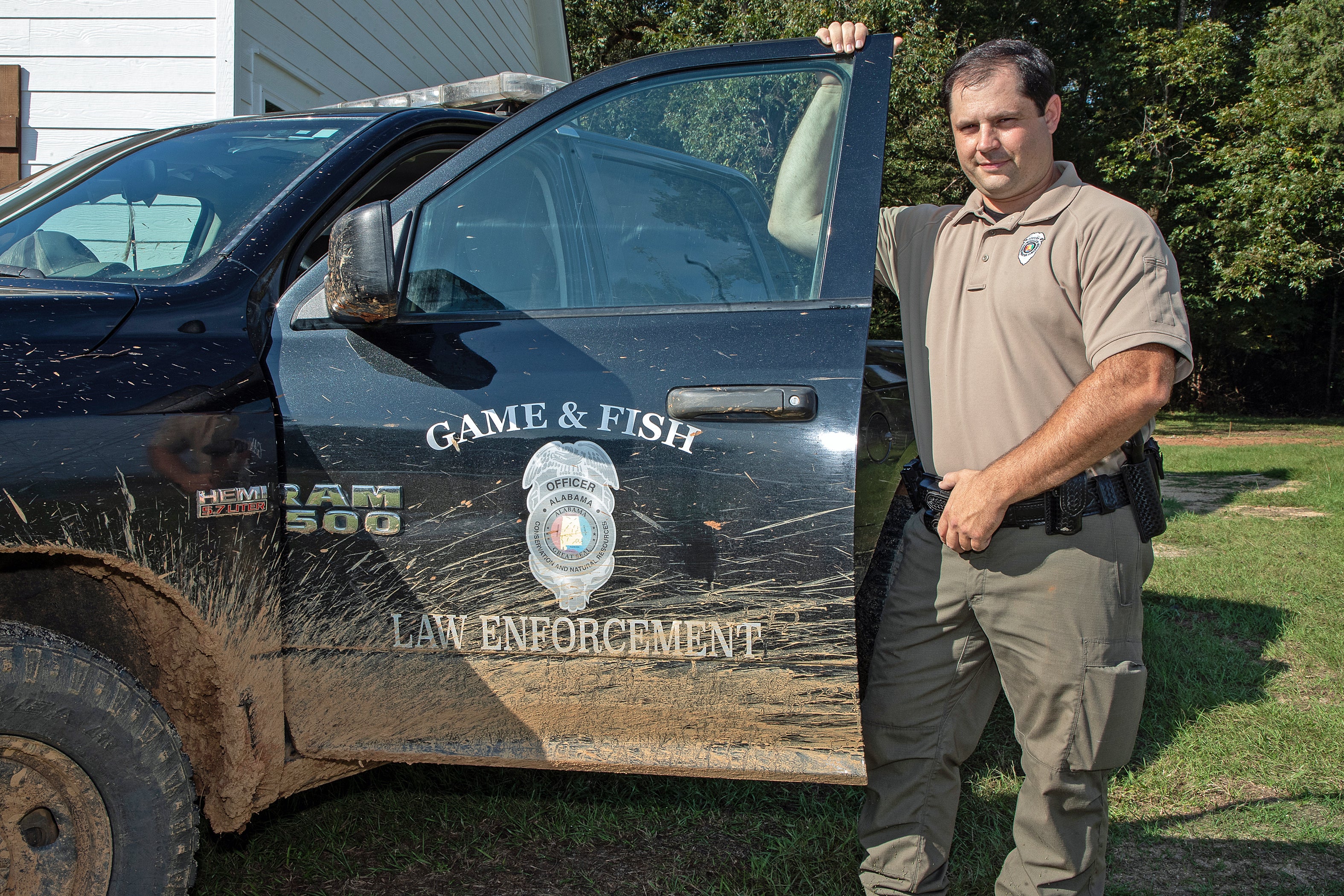By DAVID RAINER, Alabama Department of Conservation and Natural Resources
A missing child may be the most frightening situation a community can imagine, and sometimes it takes a seasoned tracker to yield a successful outcome.
Alabama Wildlife and Freshwater Fisheries (WFF) Conservation Enforcement Officer (CEO) Chris Hill found himself in just that scenario recently when a 3-year-old child was reported missing in Autauga County.
Hill was called by a local farmer who asked if Hill had heard about a missing child. He hadn’t.
“I called the sheriff, and they were looking for a child in the woods,” he said. “I said if he’s in the woods I’m coming to help.”
The WFF maintains a K-9 unit for tracking fugitives and missing persons, but none of the dogs were available at the time. When Hill arrived at the site, the first rule of tracking – don’t compromise the search site with human scent – was already out the window. Human nature in a situation like that is to venture into the area where the child was last seen and walk around looking for him. People do this out of the best of intentions with a genuine desire to help. Often, however, this makes the search much harder for those who come later.
“When I got there, I guess it had been put on social media because there were already 100 people there,” he said. “I found the sheriff when I got there and got an update. The daddy was cutting grass and the little kid was in the backyard, playing like he always does with his dog. The dad went to cut grass in the front yard.”
When he came back around to the backyard, his son had disappeared. When the youngster wasn’t found inside the house, the father called for help. When Hill arrived, a rescue squad was starting a grid search.
“There were two hunting roads, basically fire breaks, that lead in directions behind the house,” Hill said. “Before I got there, the rescue squad had a bloodhound that tracked something to a food plot about 350-400 yards behind the house, but the dog lost the scent at the food plot.”
Hill said between 40 and 50 people performed the grid search with flashlights behind the house and found no sign of the child.
The ALEA (Alabama Law Enforcement Agency) Aviation helicopter was also flying overhead searching with its FLIR (forward-looking infrared) thermal imaging camera and also found no trace of the missing youngster.
“After the grid search, we were coming back,” Hill said. “I wasn’t aware they had used a bloodhound before I got there, and somebody said the bloodhound had tracked the kid to a green field. I told the sheriff I was going back to the green field and look around.
“I had two deputies with me, (Ryan) Holena and (Devin) Lincoln, who I had worked with before I became a Game Warden. When we got down there, I looked around and told them, ‘This is a 3-year-old boy. He’s not going to walk through these briars,’ because it was thick.”
They looked around the food plot in the young pines, searching for any trails the youngster may have followed. When they got to the bottom of the food plot, they realized several ATVs had driven through the field looking for the boy.








